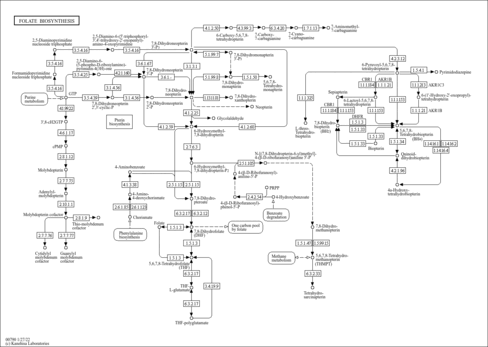| Triphosphate,1TMS,isomer #1 | C[Si](C)(C)OP(=O)(O)OP(=O)(O)OP(=O)(O)O | 2223.5 | Semi standard non polar | 33892256 |
| Triphosphate,1TMS,isomer #1 | C[Si](C)(C)OP(=O)(O)OP(=O)(O)OP(=O)(O)O | 2134.0 | Standard non polar | 33892256 |
| Triphosphate,1TMS,isomer #1 | C[Si](C)(C)OP(=O)(O)OP(=O)(O)OP(=O)(O)O | 3231.0 | Standard polar | 33892256 |
| Triphosphate,1TMS,isomer #2 | C[Si](C)(C)OP(=O)(OP(=O)(O)O)OP(=O)(O)O | 2226.8 | Semi standard non polar | 33892256 |
| Triphosphate,1TMS,isomer #2 | C[Si](C)(C)OP(=O)(OP(=O)(O)O)OP(=O)(O)O | 2170.6 | Standard non polar | 33892256 |
| Triphosphate,1TMS,isomer #2 | C[Si](C)(C)OP(=O)(OP(=O)(O)O)OP(=O)(O)O | 3255.3 | Standard polar | 33892256 |
| Triphosphate,2TMS,isomer #1 | C[Si](C)(C)OP(=O)(O[Si](C)(C)C)OP(=O)(O)OP(=O)(O)O | 2221.1 | Semi standard non polar | 33892256 |
| Triphosphate,2TMS,isomer #1 | C[Si](C)(C)OP(=O)(O[Si](C)(C)C)OP(=O)(O)OP(=O)(O)O | 2181.7 | Standard non polar | 33892256 |
| Triphosphate,2TMS,isomer #1 | C[Si](C)(C)OP(=O)(O[Si](C)(C)C)OP(=O)(O)OP(=O)(O)O | 2925.5 | Standard polar | 33892256 |
| Triphosphate,2TMS,isomer #2 | C[Si](C)(C)OP(=O)(O)OP(=O)(O[Si](C)(C)C)OP(=O)(O)O | 2210.1 | Semi standard non polar | 33892256 |
| Triphosphate,2TMS,isomer #2 | C[Si](C)(C)OP(=O)(O)OP(=O)(O[Si](C)(C)C)OP(=O)(O)O | 2199.1 | Standard non polar | 33892256 |
| Triphosphate,2TMS,isomer #2 | C[Si](C)(C)OP(=O)(O)OP(=O)(O[Si](C)(C)C)OP(=O)(O)O | 2887.7 | Standard polar | 33892256 |
| Triphosphate,2TMS,isomer #3 | C[Si](C)(C)OP(=O)(O)OP(=O)(O)OP(=O)(O)O[Si](C)(C)C | 2229.2 | Semi standard non polar | 33892256 |
| Triphosphate,2TMS,isomer #3 | C[Si](C)(C)OP(=O)(O)OP(=O)(O)OP(=O)(O)O[Si](C)(C)C | 2166.3 | Standard non polar | 33892256 |
| Triphosphate,2TMS,isomer #3 | C[Si](C)(C)OP(=O)(O)OP(=O)(O)OP(=O)(O)O[Si](C)(C)C | 2937.8 | Standard polar | 33892256 |
| Triphosphate,3TMS,isomer #1 | C[Si](C)(C)OP(=O)(O[Si](C)(C)C)OP(=O)(O[Si](C)(C)C)OP(=O)(O)O | 2203.1 | Semi standard non polar | 33892256 |
| Triphosphate,3TMS,isomer #1 | C[Si](C)(C)OP(=O)(O[Si](C)(C)C)OP(=O)(O[Si](C)(C)C)OP(=O)(O)O | 2223.7 | Standard non polar | 33892256 |
| Triphosphate,3TMS,isomer #1 | C[Si](C)(C)OP(=O)(O[Si](C)(C)C)OP(=O)(O[Si](C)(C)C)OP(=O)(O)O | 2679.9 | Standard polar | 33892256 |
| Triphosphate,3TMS,isomer #2 | C[Si](C)(C)OP(=O)(O)OP(=O)(O)OP(=O)(O[Si](C)(C)C)O[Si](C)(C)C | 2194.8 | Semi standard non polar | 33892256 |
| Triphosphate,3TMS,isomer #2 | C[Si](C)(C)OP(=O)(O)OP(=O)(O)OP(=O)(O[Si](C)(C)C)O[Si](C)(C)C | 2198.9 | Standard non polar | 33892256 |
| Triphosphate,3TMS,isomer #2 | C[Si](C)(C)OP(=O)(O)OP(=O)(O)OP(=O)(O[Si](C)(C)C)O[Si](C)(C)C | 2754.9 | Standard polar | 33892256 |
| Triphosphate,3TMS,isomer #3 | C[Si](C)(C)OP(=O)(O)OP(=O)(O[Si](C)(C)C)OP(=O)(O)O[Si](C)(C)C | 2180.7 | Semi standard non polar | 33892256 |
| Triphosphate,3TMS,isomer #3 | C[Si](C)(C)OP(=O)(O)OP(=O)(O[Si](C)(C)C)OP(=O)(O)O[Si](C)(C)C | 2214.8 | Standard non polar | 33892256 |
| Triphosphate,3TMS,isomer #3 | C[Si](C)(C)OP(=O)(O)OP(=O)(O[Si](C)(C)C)OP(=O)(O)O[Si](C)(C)C | 2738.5 | Standard polar | 33892256 |
| Triphosphate,4TMS,isomer #1 | C[Si](C)(C)OP(=O)(O)OP(=O)(O[Si](C)(C)C)OP(=O)(O[Si](C)(C)C)O[Si](C)(C)C | 2209.7 | Semi standard non polar | 33892256 |
| Triphosphate,4TMS,isomer #1 | C[Si](C)(C)OP(=O)(O)OP(=O)(O[Si](C)(C)C)OP(=O)(O[Si](C)(C)C)O[Si](C)(C)C | 2244.7 | Standard non polar | 33892256 |
| Triphosphate,4TMS,isomer #1 | C[Si](C)(C)OP(=O)(O)OP(=O)(O[Si](C)(C)C)OP(=O)(O[Si](C)(C)C)O[Si](C)(C)C | 2555.9 | Standard polar | 33892256 |
| Triphosphate,4TMS,isomer #2 | C[Si](C)(C)OP(=O)(O[Si](C)(C)C)OP(=O)(O)OP(=O)(O[Si](C)(C)C)O[Si](C)(C)C | 2230.1 | Semi standard non polar | 33892256 |
| Triphosphate,4TMS,isomer #2 | C[Si](C)(C)OP(=O)(O[Si](C)(C)C)OP(=O)(O)OP(=O)(O[Si](C)(C)C)O[Si](C)(C)C | 2235.8 | Standard non polar | 33892256 |
| Triphosphate,4TMS,isomer #2 | C[Si](C)(C)OP(=O)(O[Si](C)(C)C)OP(=O)(O)OP(=O)(O[Si](C)(C)C)O[Si](C)(C)C | 2569.3 | Standard polar | 33892256 |
| Triphosphate,5TMS,isomer #1 | C[Si](C)(C)OP(=O)(O[Si](C)(C)C)OP(=O)(O[Si](C)(C)C)OP(=O)(O[Si](C)(C)C)O[Si](C)(C)C | 2253.2 | Semi standard non polar | 33892256 |
| Triphosphate,5TMS,isomer #1 | C[Si](C)(C)OP(=O)(O[Si](C)(C)C)OP(=O)(O[Si](C)(C)C)OP(=O)(O[Si](C)(C)C)O[Si](C)(C)C | 2280.3 | Standard non polar | 33892256 |
| Triphosphate,5TMS,isomer #1 | C[Si](C)(C)OP(=O)(O[Si](C)(C)C)OP(=O)(O[Si](C)(C)C)OP(=O)(O[Si](C)(C)C)O[Si](C)(C)C | 2342.1 | Standard polar | 33892256 |
| Triphosphate,1TBDMS,isomer #1 | CC(C)(C)[Si](C)(C)OP(=O)(O)OP(=O)(O)OP(=O)(O)O | 2490.5 | Semi standard non polar | 33892256 |
| Triphosphate,1TBDMS,isomer #1 | CC(C)(C)[Si](C)(C)OP(=O)(O)OP(=O)(O)OP(=O)(O)O | 2340.5 | Standard non polar | 33892256 |
| Triphosphate,1TBDMS,isomer #1 | CC(C)(C)[Si](C)(C)OP(=O)(O)OP(=O)(O)OP(=O)(O)O | 3374.8 | Standard polar | 33892256 |
| Triphosphate,1TBDMS,isomer #2 | CC(C)(C)[Si](C)(C)OP(=O)(OP(=O)(O)O)OP(=O)(O)O | 2473.0 | Semi standard non polar | 33892256 |
| Triphosphate,1TBDMS,isomer #2 | CC(C)(C)[Si](C)(C)OP(=O)(OP(=O)(O)O)OP(=O)(O)O | 2371.1 | Standard non polar | 33892256 |
| Triphosphate,1TBDMS,isomer #2 | CC(C)(C)[Si](C)(C)OP(=O)(OP(=O)(O)O)OP(=O)(O)O | 3366.0 | Standard polar | 33892256 |
| Triphosphate,2TBDMS,isomer #1 | CC(C)(C)[Si](C)(C)OP(=O)(O[Si](C)(C)C(C)(C)C)OP(=O)(O)OP(=O)(O)O | 2645.0 | Semi standard non polar | 33892256 |
| Triphosphate,2TBDMS,isomer #1 | CC(C)(C)[Si](C)(C)OP(=O)(O[Si](C)(C)C(C)(C)C)OP(=O)(O)OP(=O)(O)O | 2513.8 | Standard non polar | 33892256 |
| Triphosphate,2TBDMS,isomer #1 | CC(C)(C)[Si](C)(C)OP(=O)(O[Si](C)(C)C(C)(C)C)OP(=O)(O)OP(=O)(O)O | 3196.8 | Standard polar | 33892256 |
| Triphosphate,2TBDMS,isomer #2 | CC(C)(C)[Si](C)(C)OP(=O)(O)OP(=O)(O[Si](C)(C)C(C)(C)C)OP(=O)(O)O | 2641.1 | Semi standard non polar | 33892256 |
| Triphosphate,2TBDMS,isomer #2 | CC(C)(C)[Si](C)(C)OP(=O)(O)OP(=O)(O[Si](C)(C)C(C)(C)C)OP(=O)(O)O | 2569.6 | Standard non polar | 33892256 |
| Triphosphate,2TBDMS,isomer #2 | CC(C)(C)[Si](C)(C)OP(=O)(O)OP(=O)(O[Si](C)(C)C(C)(C)C)OP(=O)(O)O | 3142.5 | Standard polar | 33892256 |
| Triphosphate,2TBDMS,isomer #3 | CC(C)(C)[Si](C)(C)OP(=O)(O)OP(=O)(O)OP(=O)(O)O[Si](C)(C)C(C)(C)C | 2673.8 | Semi standard non polar | 33892256 |
| Triphosphate,2TBDMS,isomer #3 | CC(C)(C)[Si](C)(C)OP(=O)(O)OP(=O)(O)OP(=O)(O)O[Si](C)(C)C(C)(C)C | 2549.5 | Standard non polar | 33892256 |
| Triphosphate,2TBDMS,isomer #3 | CC(C)(C)[Si](C)(C)OP(=O)(O)OP(=O)(O)OP(=O)(O)O[Si](C)(C)C(C)(C)C | 3216.0 | Standard polar | 33892256 |
| Triphosphate,3TBDMS,isomer #1 | CC(C)(C)[Si](C)(C)OP(=O)(O[Si](C)(C)C(C)(C)C)OP(=O)(O[Si](C)(C)C(C)(C)C)OP(=O)(O)O | 2788.6 | Semi standard non polar | 33892256 |
| Triphosphate,3TBDMS,isomer #1 | CC(C)(C)[Si](C)(C)OP(=O)(O[Si](C)(C)C(C)(C)C)OP(=O)(O[Si](C)(C)C(C)(C)C)OP(=O)(O)O | 2694.2 | Standard non polar | 33892256 |
| Triphosphate,3TBDMS,isomer #1 | CC(C)(C)[Si](C)(C)OP(=O)(O[Si](C)(C)C(C)(C)C)OP(=O)(O[Si](C)(C)C(C)(C)C)OP(=O)(O)O | 2995.8 | Standard polar | 33892256 |
| Triphosphate,3TBDMS,isomer #2 | CC(C)(C)[Si](C)(C)OP(=O)(O)OP(=O)(O)OP(=O)(O[Si](C)(C)C(C)(C)C)O[Si](C)(C)C(C)(C)C | 2791.9 | Semi standard non polar | 33892256 |
| Triphosphate,3TBDMS,isomer #2 | CC(C)(C)[Si](C)(C)OP(=O)(O)OP(=O)(O)OP(=O)(O[Si](C)(C)C(C)(C)C)O[Si](C)(C)C(C)(C)C | 2679.6 | Standard non polar | 33892256 |
| Triphosphate,3TBDMS,isomer #2 | CC(C)(C)[Si](C)(C)OP(=O)(O)OP(=O)(O)OP(=O)(O[Si](C)(C)C(C)(C)C)O[Si](C)(C)C(C)(C)C | 3079.7 | Standard polar | 33892256 |
| Triphosphate,3TBDMS,isomer #3 | CC(C)(C)[Si](C)(C)OP(=O)(O)OP(=O)(O[Si](C)(C)C(C)(C)C)OP(=O)(O)O[Si](C)(C)C(C)(C)C | 2793.0 | Semi standard non polar | 33892256 |
| Triphosphate,3TBDMS,isomer #3 | CC(C)(C)[Si](C)(C)OP(=O)(O)OP(=O)(O[Si](C)(C)C(C)(C)C)OP(=O)(O)O[Si](C)(C)C(C)(C)C | 2732.0 | Standard non polar | 33892256 |
| Triphosphate,3TBDMS,isomer #3 | CC(C)(C)[Si](C)(C)OP(=O)(O)OP(=O)(O[Si](C)(C)C(C)(C)C)OP(=O)(O)O[Si](C)(C)C(C)(C)C | 3005.5 | Standard polar | 33892256 |
| Triphosphate,4TBDMS,isomer #1 | CC(C)(C)[Si](C)(C)OP(=O)(O)OP(=O)(O[Si](C)(C)C(C)(C)C)OP(=O)(O[Si](C)(C)C(C)(C)C)O[Si](C)(C)C(C)(C)C | 2960.1 | Semi standard non polar | 33892256 |
| Triphosphate,4TBDMS,isomer #1 | CC(C)(C)[Si](C)(C)OP(=O)(O)OP(=O)(O[Si](C)(C)C(C)(C)C)OP(=O)(O[Si](C)(C)C(C)(C)C)O[Si](C)(C)C(C)(C)C | 2796.3 | Standard non polar | 33892256 |
| Triphosphate,4TBDMS,isomer #1 | CC(C)(C)[Si](C)(C)OP(=O)(O)OP(=O)(O[Si](C)(C)C(C)(C)C)OP(=O)(O[Si](C)(C)C(C)(C)C)O[Si](C)(C)C(C)(C)C | 2888.1 | Standard polar | 33892256 |
| Triphosphate,4TBDMS,isomer #2 | CC(C)(C)[Si](C)(C)OP(=O)(O[Si](C)(C)C(C)(C)C)OP(=O)(O)OP(=O)(O[Si](C)(C)C(C)(C)C)O[Si](C)(C)C(C)(C)C | 2975.6 | Semi standard non polar | 33892256 |
| Triphosphate,4TBDMS,isomer #2 | CC(C)(C)[Si](C)(C)OP(=O)(O[Si](C)(C)C(C)(C)C)OP(=O)(O)OP(=O)(O[Si](C)(C)C(C)(C)C)O[Si](C)(C)C(C)(C)C | 2757.0 | Standard non polar | 33892256 |
| Triphosphate,4TBDMS,isomer #2 | CC(C)(C)[Si](C)(C)OP(=O)(O[Si](C)(C)C(C)(C)C)OP(=O)(O)OP(=O)(O[Si](C)(C)C(C)(C)C)O[Si](C)(C)C(C)(C)C | 2933.0 | Standard polar | 33892256 |
| Triphosphate,5TBDMS,isomer #1 | CC(C)(C)[Si](C)(C)OP(=O)(O[Si](C)(C)C(C)(C)C)OP(=O)(O[Si](C)(C)C(C)(C)C)OP(=O)(O[Si](C)(C)C(C)(C)C)O[Si](C)(C)C(C)(C)C | 3146.9 | Semi standard non polar | 33892256 |
| Triphosphate,5TBDMS,isomer #1 | CC(C)(C)[Si](C)(C)OP(=O)(O[Si](C)(C)C(C)(C)C)OP(=O)(O[Si](C)(C)C(C)(C)C)OP(=O)(O[Si](C)(C)C(C)(C)C)O[Si](C)(C)C(C)(C)C | 2889.0 | Standard non polar | 33892256 |
| Triphosphate,5TBDMS,isomer #1 | CC(C)(C)[Si](C)(C)OP(=O)(O[Si](C)(C)C(C)(C)C)OP(=O)(O[Si](C)(C)C(C)(C)C)OP(=O)(O[Si](C)(C)C(C)(C)C)O[Si](C)(C)C(C)(C)C | 2782.6 | Standard polar | 33892256 |
